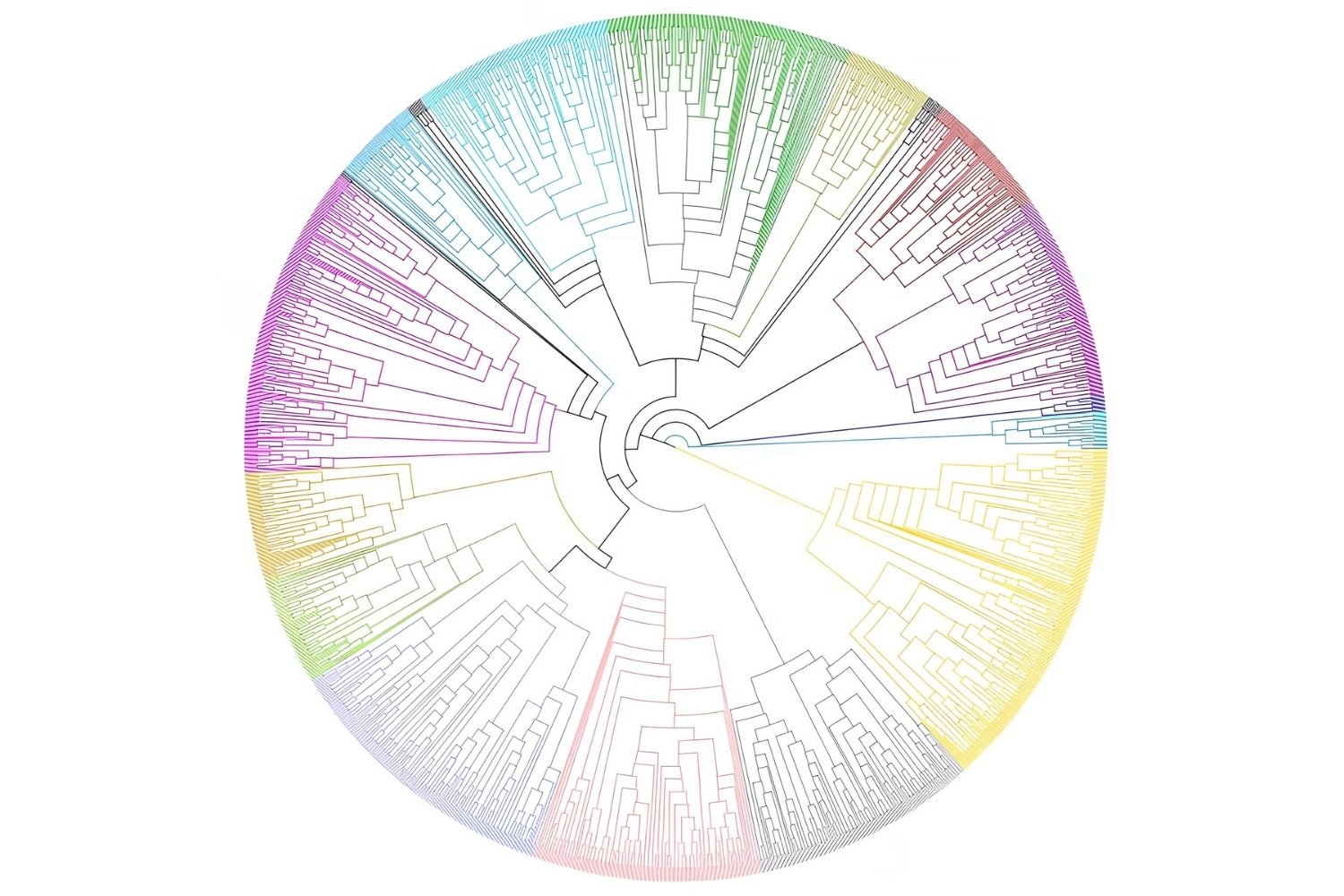
Phylogenomics is a fascinating field that combines genomics and evolutionary biology to understand the genetic relationships among different species. Ever wondered how scientists determine the evolutionary tree of life? Phylogenomics holds the key. By analyzing the DNA sequences of various organisms, researchers can trace back their common ancestors and uncover the intricate web of life. This field not only helps in understanding biodiversity but also plays a crucial role in medicine, agriculture, and conservation. Imagine being able to pinpoint the genetic origins of diseases or develop crops that can withstand harsh climates. Phylogenomics makes these advancements possible. Ready to dive into 35 intriguing facts about this groundbreaking science? Let's get started!
What is Phylogenomics?
Phylogenomics combines phylogenetics and genomics to study evolutionary relationships using genome data. This field has revolutionized our understanding of how species are related and how they have evolved over time.
- Phylogenomics uses entire genomes to determine evolutionary relationships, rather than just a few genes.
- The term "phylogenomics" was first coined in 1998 by Jonathan Eisen.
- It helps identify gene functions by comparing genomes across different species.
- Phylogenomics can trace the evolutionary history of genes and genomes.
- This field has applications in medicine, agriculture, and conservation biology.
Techniques Used in Phylogenomics
Various techniques are employed to gather and analyze genomic data. These methods help scientists build more accurate evolutionary trees.
- Next-generation sequencing (NGS) allows rapid sequencing of entire genomes.
- Comparative genomics compares the genomes of different species to find similarities and differences.
- Bioinformatics tools analyze large datasets to identify evolutionary patterns.
- Molecular clock techniques estimate the time of evolutionary events based on genetic mutations.
- Phylogenetic tree construction methods, like Maximum Likelihood and Bayesian Inference, are used to create evolutionary trees.
Applications of Phylogenomics
Phylogenomics has a wide range of applications that impact various fields. These applications help solve real-world problems and advance scientific knowledge.
- In medicine, phylogenomics helps track the evolution of pathogens and develop vaccines.
- It aids in identifying genes responsible for diseases.
- In agriculture, it helps improve crop resistance to pests and diseases.
- Conservation biology uses phylogenomics to understand the genetic diversity of endangered species.
- It assists in tracing the origins and migrations of human populations.
Challenges in Phylogenomics
Despite its many benefits, phylogenomics faces several challenges. These obstacles can complicate the analysis and interpretation of genomic data.
- Handling large datasets requires significant computational power.
- Incomplete or low-quality genome sequences can lead to inaccurate results.
- Horizontal gene transfer complicates the reconstruction of evolutionary relationships.
- Convergent evolution, where unrelated species evolve similar traits, can mislead phylogenomic analyses.
- Integrating data from different sources and formats is often challenging.
Future of Phylogenomics
The future of phylogenomics looks promising with advancements in technology and methodology. These developments will enhance our understanding of evolutionary processes.
- Improved sequencing technologies will make genome sequencing faster and cheaper.
- Enhanced bioinformatics tools will allow more accurate analysis of genomic data.
- Integration of multi-omics data, like proteomics and metabolomics, will provide a more comprehensive view of evolution.
- Machine learning algorithms will help identify complex patterns in genomic data.
- Collaborative efforts and data sharing among scientists will accelerate discoveries in phylogenomics.
Interesting Facts About Phylogenomics
Phylogenomics is full of fascinating facts that highlight its importance and impact. These tidbits offer a glimpse into the exciting world of evolutionary genomics.
- Phylogenomics has revealed that humans share about 98% of their DNA with chimpanzees.
- The field has helped identify ancient gene duplications that gave rise to new functions.
- Phylogenomics has shown that some genes have been conserved for billions of years.
- It has uncovered the evolutionary history of antibiotic resistance genes.
- The study of ancient DNA has provided insights into the evolution of extinct species.
Real-World Examples of Phylogenomics
Real-world examples demonstrate the practical applications of phylogenomics. These cases show how the field has made significant contributions to science and society.
- Phylogenomics helped trace the origin of the 2009 H1N1 influenza pandemic.
- It has been used to study the evolution of cancer and identify potential therapeutic targets.
- The field has contributed to the development of genetically modified crops with improved traits.
- Phylogenomics has aided in the identification of cryptic species, which are species that look identical but are genetically distinct.
- It has provided insights into the co-evolution of hosts and their parasites.
The Final Word on Phylogenomics
Phylogenomics is a fascinating field that combines evolutionary biology and genomics. It helps us understand the genetic relationships between different species, shedding light on the tree of life. By analyzing large sets of genetic data, scientists can trace the evolutionary history of organisms, revealing how they are connected. This field has practical applications in medicine, agriculture, and conservation, making it incredibly valuable.
From identifying disease-causing genes to improving crop resilience, phylogenomics offers solutions to real-world problems. It's a rapidly evolving area of study, with new discoveries constantly emerging. Staying informed about these advancements can provide a deeper appreciation for the complexity of life on Earth. So, whether you're a student, a researcher, or just curious, keep an eye on this exciting field. It promises to unlock many more secrets of our biological world.
Was this page helpful?
Our commitment to delivering trustworthy and engaging content is at the heart of what we do. Each fact on our site is contributed by real users like you, bringing a wealth of diverse insights and information. To ensure the highest standards of accuracy and reliability, our dedicated editors meticulously review each submission. This process guarantees that the facts we share are not only fascinating but also credible. Trust in our commitment to quality and authenticity as you explore and learn with us.
